
We get it. You’re wondering what the absolute best destination to travel in Southeast Asia is. You’ve spent hours researching. Talked to friends. Scoured the internet for blogs. Watched YouTube videos. And you’ve finally realised something. Without a doubt, Vietnam is the place for you. And trust us, as a couple that have travelled the world for over a decade, we think you’ve made the right decision. There’s a reason Vietnam is our all-time favourite country… From the tropical coral reefs of Nha Trang to the northern mountains of Sa Pa, travel to Vietnam is one of the most adventurous yet culturally empowering experiences you can have. One moment you will find yourself haggling for banh mi deep within Saigon and later that day you could be watching a breathtaking sunset from the Mekong Delta. Vietnam is more than a country. It’s an experience. You’ll find yourself immersed among street food vendors cooking up exotic cuisines such as pho along streets with stores selling suits and ties. Or you’ll be cruising the waters of Halong Bay while monkeys jump from island to island. Or you might find yourself trekking to the highest peak in Vietnam, Fansipan soaring to over 3,100 metres! Not into adventure activities? Homestays are the perfect way to spend your day as the monsoon rains fall across the endless snaking rivers of the Mekong. Vietnamese hospitality is unrivalled and is something that you should experience once in your life, so what are you waiting for? Say good morning Vietnam! And go get lost! So we’ve convinced you to travel to Vietnam? Awesome! Now check out the basic information about the country in our Vietnam travel guide.


Vietnamese Dong (see current exchange rate). 1USD approximately = 23,000 dong. 1 beer = 30,000 dong ($1.30USD)
ENTRY / VISA:Travellers from most countries in the world are required to have visas. In most cases these can be obtained upon arrival for either 3 or 6 months. For information about your specific visa requirements click here.
VietnameseVietnam is fairly safe for travellers. Petty theft tends to be the biggest concern and always be on the lookout for taxi scams. Also of concern are minor auto/motorbike accidents. This is one place it’s great to have travel insurance when visiting.
ELECTRICITY:220 Volt at 50Hz. Power plugs – Type A: 2 vertical pins, Type C: 2 round pins, Type F (also known as Schuko plug): 2 round pins (Be sure to get your universal travel adapter before you leave)
TRANSPORTATION:Intercity travel is possible by plane, train and bus. Within cities, towns and villages you can expect to get around on bicycle rickshaws, motorbike taxes, taxis and bus.
Don’t Forget to Pack the Most Important Thing: Travel Insurance!With so much to see and do in Vietnam, it really is hard to pick the top experiences. However, we think that to truly appreciate Vietnam you need to plan to do these 5 activities during your visit.
Take the Overnight Train from Hanoi to SapaSaid to be one of the most eye-opening train rides in the world, as you pass through lush forests, rice paddy fields on your way to the Vietnamese – Chinese border. Book your train ticket here.
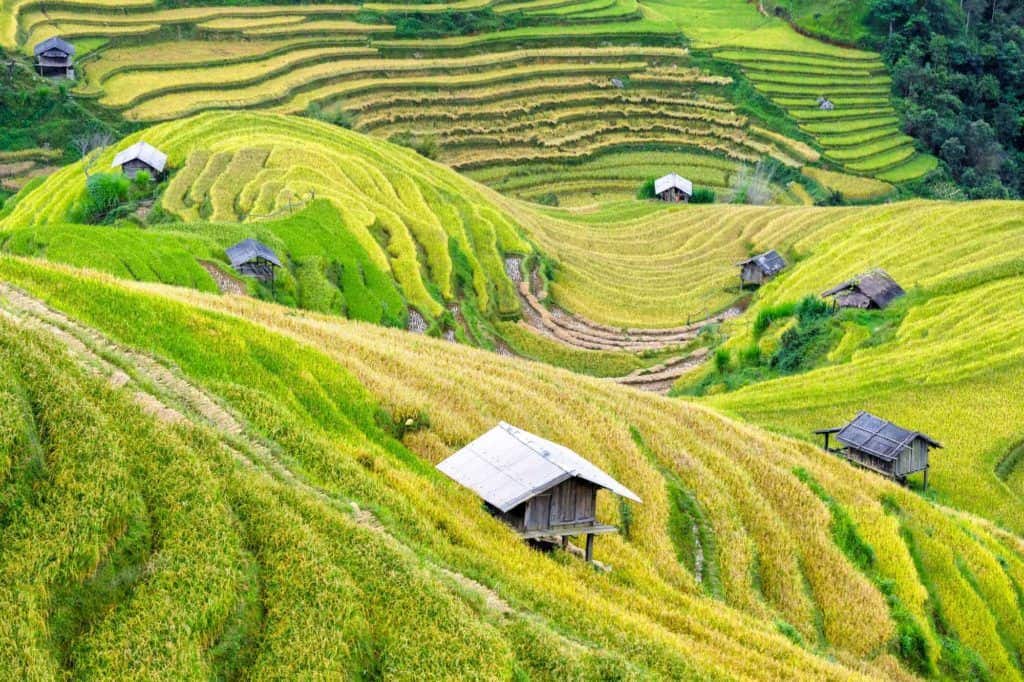
Explore the area with the local hill tribes. Stay with them during your trek. And enjoy the beautiful terraced countryside for which Sapa is known. Here’s our full post about trekking in Sapa.
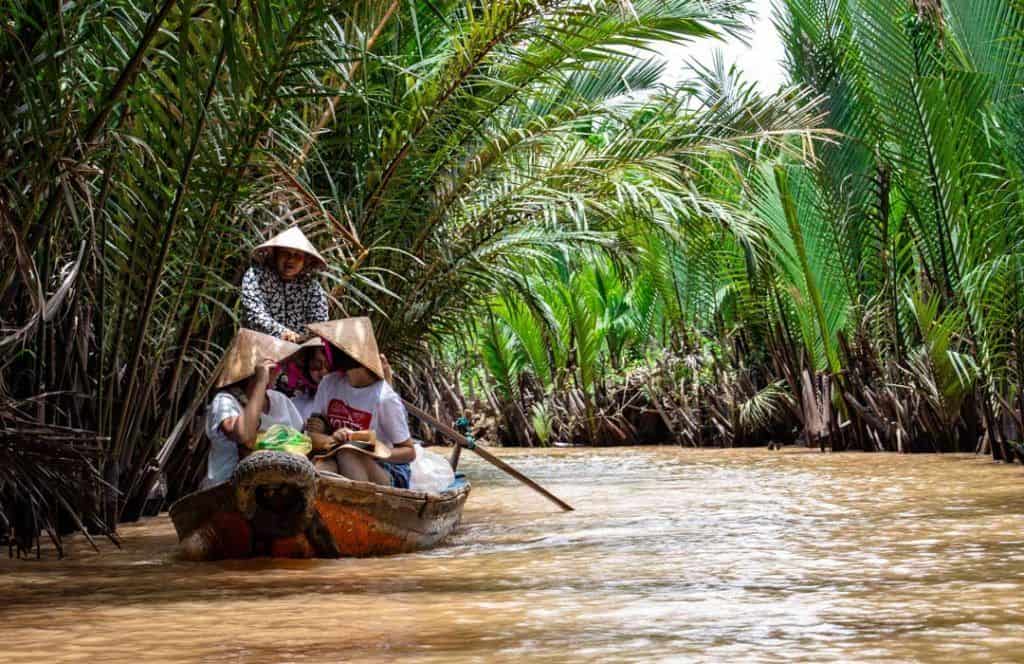
Probably one of the ‘must do’s of Vietnam.’ The Mekong Delta is full of hidden gems including floating markets, friendly locals and late afternoon storms. Book a multiday tour of the Mekong Delta
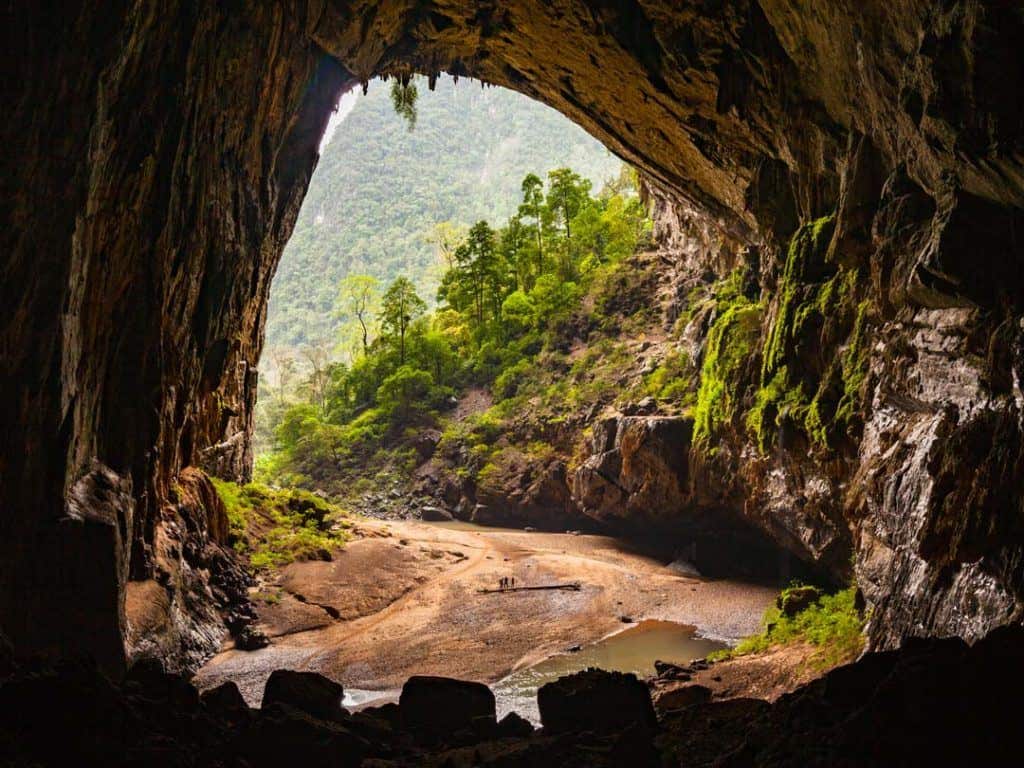
Caves there can fit a 747 plane in it. They are massive and spectacular. This is an adventure you will never forget. Book your Phong Nha cave tour
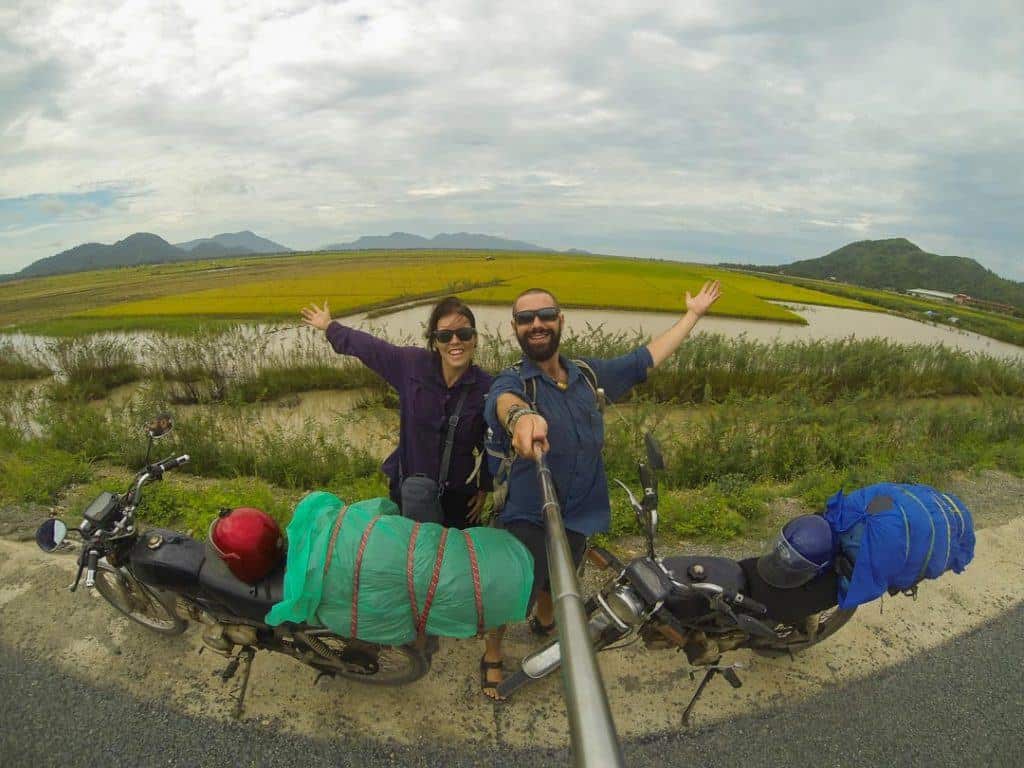
Yes, that’s right! Hiring a motorcycle or scooter is a must. But maybe do it out on the country roads. Opt for the famous ride to the mountain village of Dalat, or pretty much anywhere throughout the country. Read about how to ride through the famous Hai Van Pass
Learn to cook Vietnamese food. Eating delicious Vietnamese food is one thing. Eating it after you’ve learned to prepare it is another! Scuba dive in Nha Trang. You may not think of Vietnam as a big scuba location, but there is some great diving to be had in Nha Trang. Go canyoning in Dalat. Rappel, slide, jump and climb your way through canyons in this gorgeous place! Explore the Marble Mountains in Da Nang. These beautiful mountains have been mined for marble for years and have incredible views and temples to visit along the way. Sandboard down the sand dunes in Mui Ne. It’s like snowboarding, but down massive sand dunes! Enjoy this rush! Visit the Giants Causeway in Ghan Da Dia. Half the world away from the Giant’s Causeway in Northern Ireland, be amazed at this unique geologic structure. Visit the Cu Chi Tunnels outside of Ho Chi Minh City. No trip to HCMC is complete without touring these historic tunnels that were used during the war. Conquer the Hoi An Pass on a motorbike. This is known as one of the most beautiful sections of highway in the world. Enjoy! Explore the world’s biggest cave. We have a special connection with Hang Son Doong as it is where we were engaged. Make your own special moment too! Climb the highest mountain in Indochina in Sapa. Fansipan is over 3,000m above sea level and offers incredible views along the way to the top!
BE SURE TO CHECK OUT THESE OTHER AMAZING THINGS TO DO IN VIETNAMThere are plenty of amazing places to visit in Vietnam. Depending on your interests, trip duration and time of year you will find plenty of things to do during any length of stay.
Ho Chi Minh City (Saigon)When slurping a bowl of pho in a local market or exploring an ancient temple, it’s easy to feel like you’ve stepped into a time machine in Ho Chi Minh City. Plan your 3-day Ho Chi Minh City itinerary
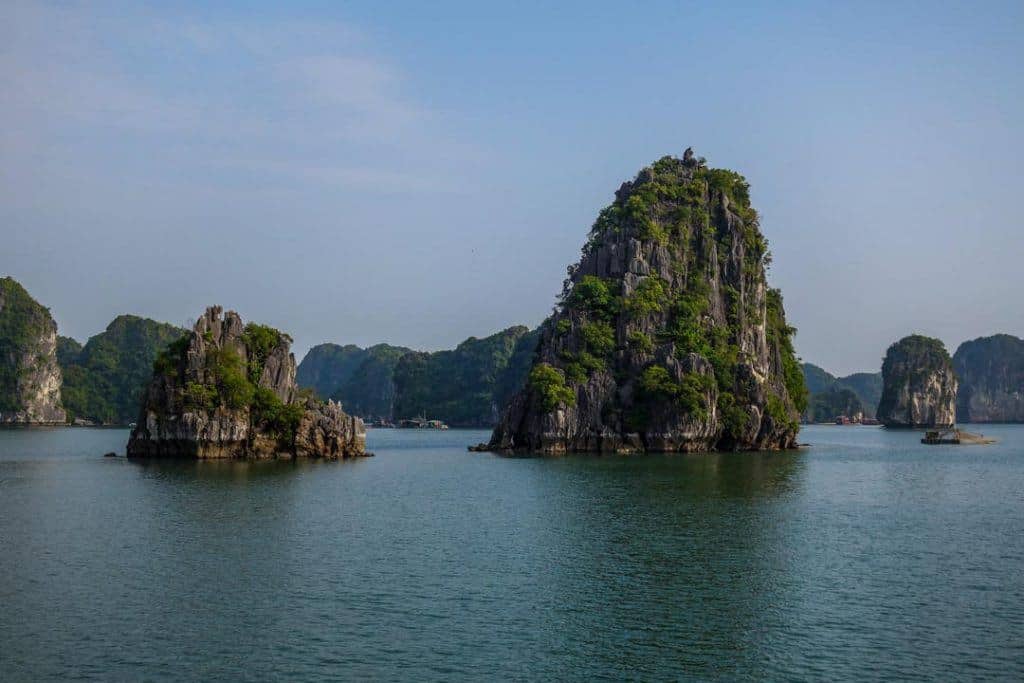
A collection of over 3,000 limestone islands providing endless kayaking opportunities. Take the time to relax aboard a boat or venture to Cat Ba National Park for mystical waterfalls! Book your tour of Halong Bay
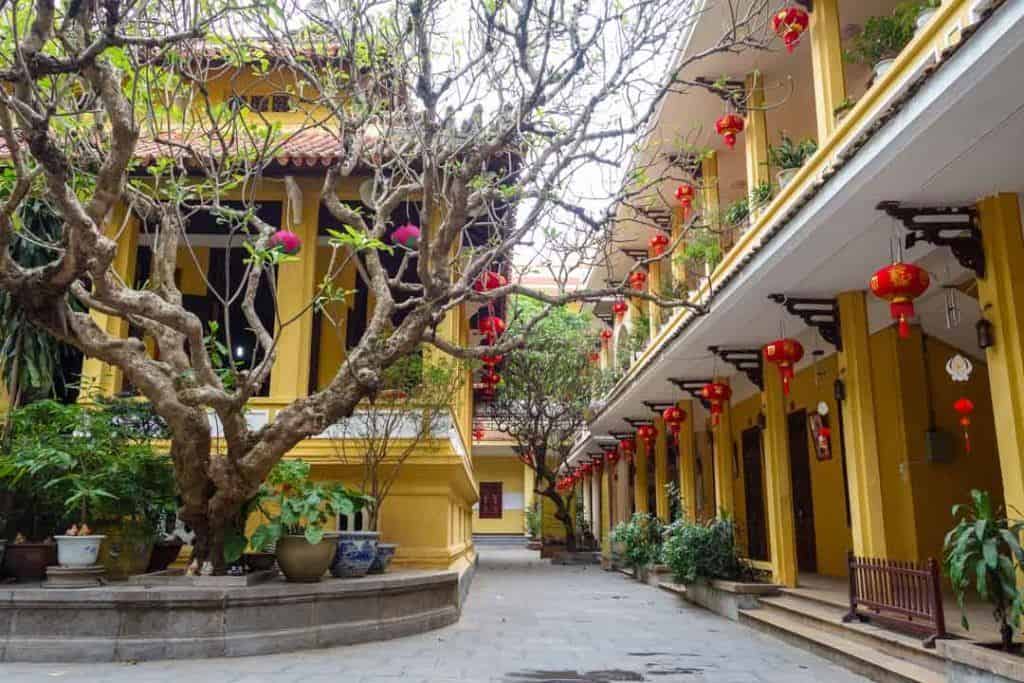
The capital of Vietnam is also one of the most ancient capitals in the world. The history of Hanoi is rich, devastating and full of legends. This mystical city is also known for its cuisine, silk, buzzing nightlife as well as cultural diversity. Plan your 3-day Hanoi itinerary
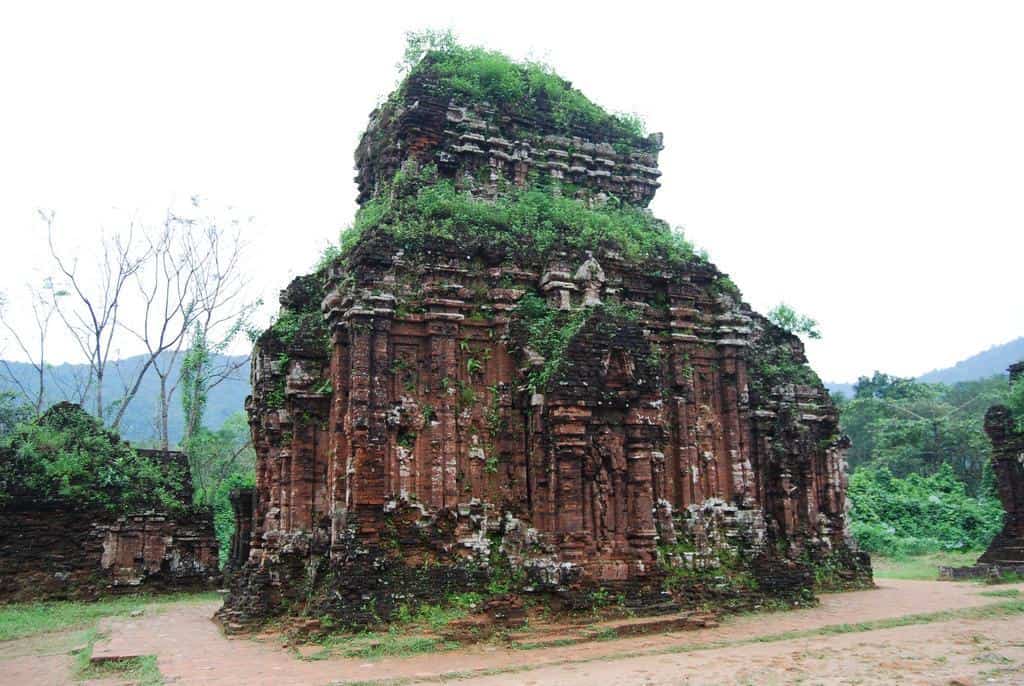
Ancient temples dating back 1,000 years give a culture understanding into Vietnam’s past all while showing the scars of the war. Book an early morning tour of My Son
For more information on specific things to do in the top places to visit in Vietnam, reference our following city travel guides:
Ho Chi Minh City: * Hanoi Itinerary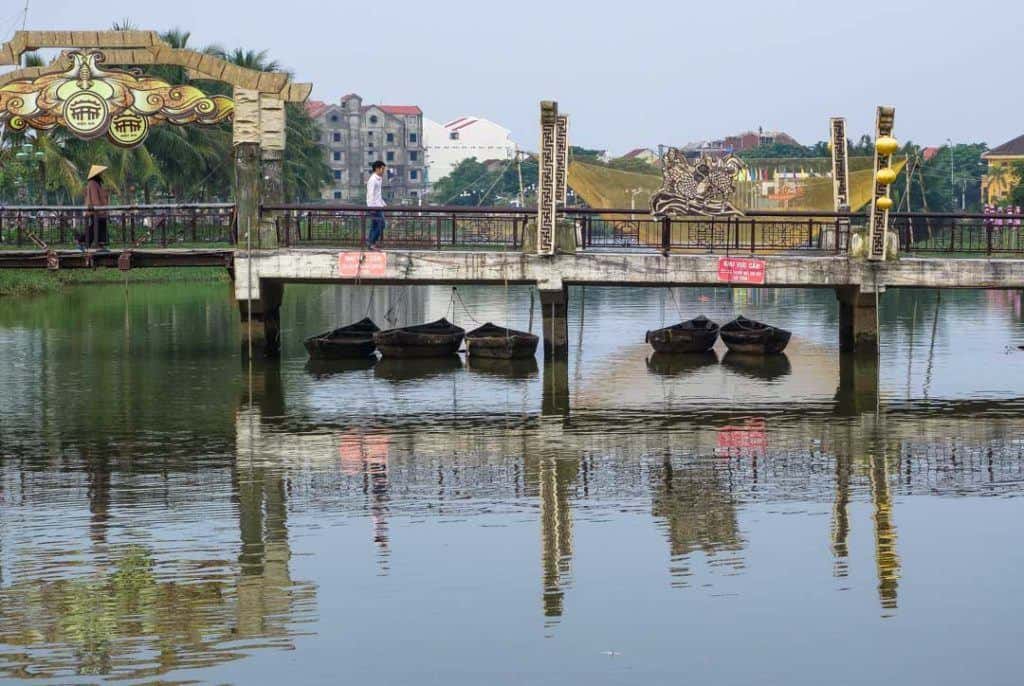
We’ve put together a few Vietnam itineraries that are sure to leave you wanting for nothing at the end of your visit. There are so many amazing things to do in Vietnam that planning an itinerary for your travel can be a little overwhelming. Even though the country is one united nation, you can think of it geographically as being divided into a northern and southern region. So depending on how much time you have, you may want to explore the northern region, southern region or the entire country. Of course, no one-size-fits-all plan will suffice. But if we were to head back to Vietnam these are the top places and things that we would want to do!
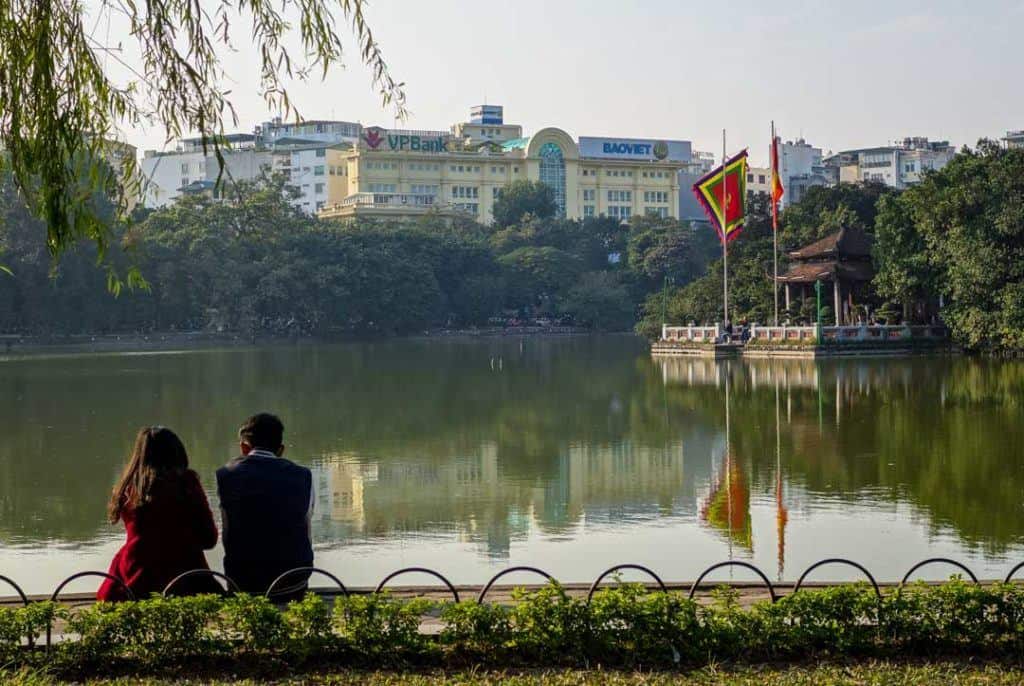
The best time to travel to Vietnam really depends on what you are looking for in terms of weather, scenery and budget. Peak season occurs from mid-December through to February. But expect prices to double during this time. The low season is perfect for those on a budget.
Vietnam is a cheap country to travel if you want it to be, this all depends on what your budget is like. Our advice is always over-budget when making plans, and if you come home with money, it can go towards your next trip. All prices below are in USD per day.
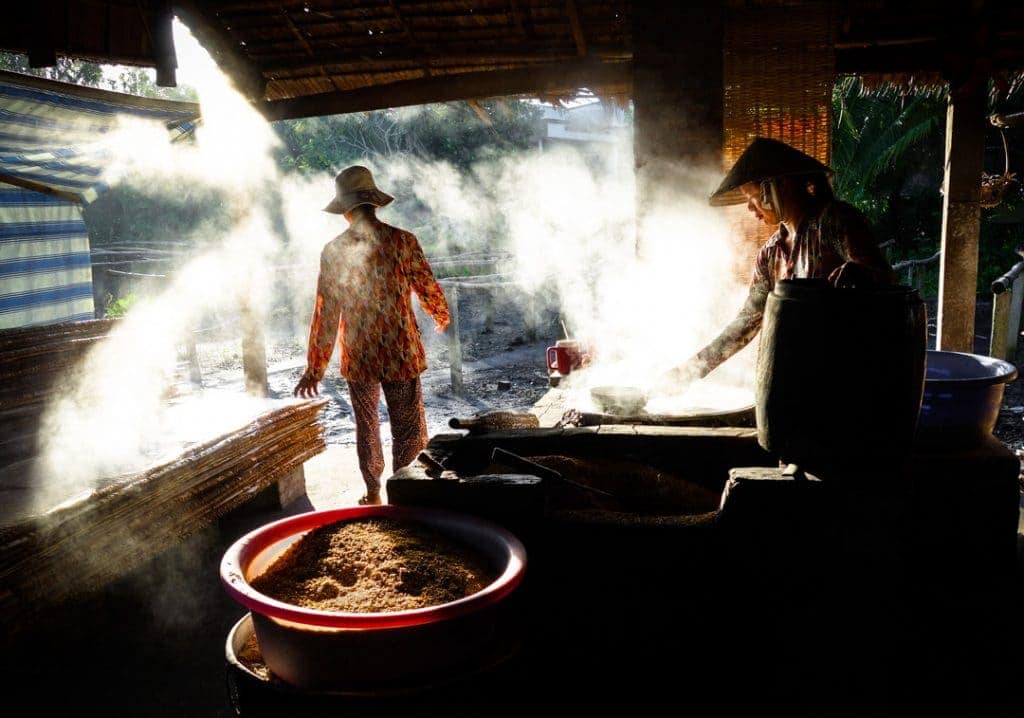
Most travellers are required to have visas when travelling to Vietnam, which can typically be arranged upon arrival. You are typically allowed to stay for 3 – 6 months, depending on nationality.
For information about your specific visa requirements click here
Additionally, Vietnam has introduced an electronic visa (e-visa), which costs $25 USD and is granted for single entry visits for up to 30 days.
You no longer will have to apply through an agent to get an invitation letter or queue at the airport immigration for hours waiting to receive your visa upon arrival.
Apply in advance here.
Once you are approved, all you need to do is print the visa out and present it on entry to Vietnam. Don’t lose this e- visa print out as you will need this during your travels in Vietnam.
Hotels will ask for it on check-in at the accommodation and travel agents may ask for it if you are booking flights.
Also, print out your travel insurance as well. Immigration will ask for this also as they want to know you are covered if you fall ill or get injured during your stay.
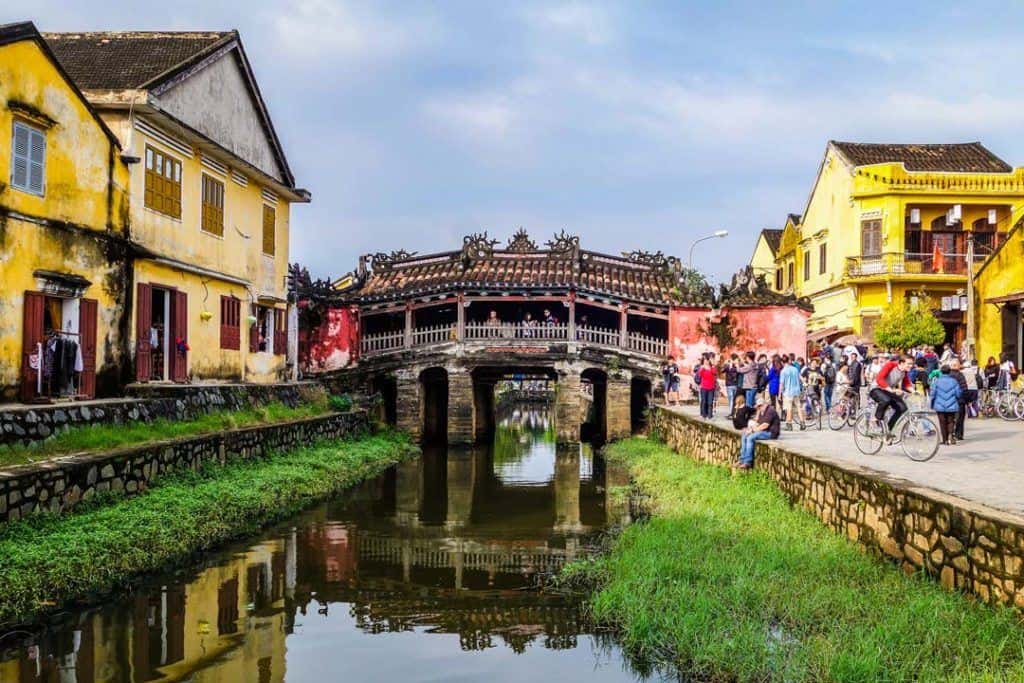
There are a number of different ways to travel to Vietnam, depending on where you are coming from and how you like to get around with transport.
There are a lot of different airlines that fly to Vietnam from all over the world. There are two major international airports in Vietnam: Tan Son Nhat Airport (SGN) in Ho Chi Minh City in the south and Noi Bai Airpot (HAN) in Hanoi in the north.
Direct flights to Vietnam from Australia, Europe and North America are still limited, but it is improving. You will most likely have to book a flight with a stopover in either Hong Kong, Bangkok, Kuala Lumpur, Seoul or Singapore.
There are many domestic airports scattered among the country. Vietnam Airlines is Vietnam’s national carrier. We have flown with them several times and they are amazing.
You can cross into Vietnam by train from China, all the way from Beijing to Ping Xian. This is the Dong Dang Crossing which is 160km from Hanoi.
After you have crossed the border hop on a train to Hanoi. Don’t buy the direct ticket from Beijing to Hanoi. It works out cheaper to buy your ticket from Beijing to Ping Xian then cross the border and purchase another ticket from Dong Dang to Hanoi.
If you do the train trip from Beijing through to Hanoi, it will take 36 hours so it is best to book a sleeper. Make sure you have your visa organised before getting to the border.
You can bring your own food and drinks for the train or purchase them from the cafeteria on board. There are squat toilets on board and areas to store your luggage.
You can get to Hanoi or Ho Chi Minh City through either the Cambodia, Laos or China borders. There is a route from Vientiane (Laos) to Hanoi, and one from Siem Reap or Phnom Penh to Ho Chi Minh City.
Most travel agents in Vientiane, Siem Reap or Phnom Penh will sell the tickets or at your accommodation. You can also get a minivan from Guangzhou through to Hanoi.
Make sure you have your visa ready. The border crossings by land may not be set up as well as others.
If you want to book any of your bus trips online rather than trying to deal with travel agencies in the country, you can do so on the popular website Bookaway.
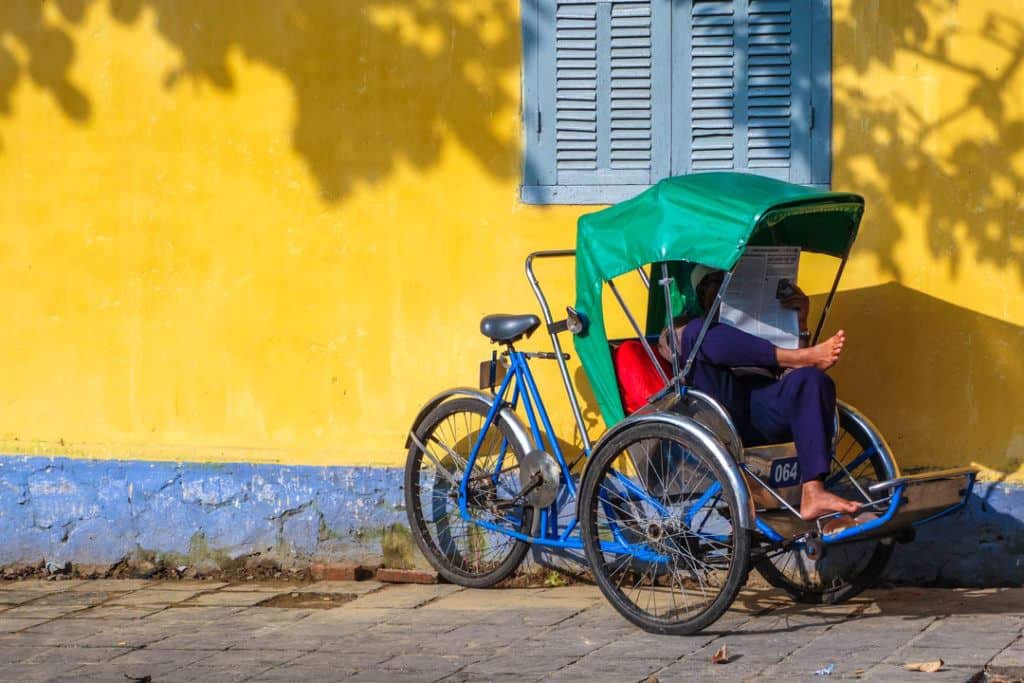
Getting around Vietnam is surprisingly easy. Public transport goes everywhere, and there are plenty of moto-taxis that are happy to take you to the places that public transport won’t reach.
The fastest way to get around the country, of course, is by air. There are many domestic airports all over the country and you can fly in from major cities.
You can get cheap flights within the country through VietJet Air and Vietnam Airlines. For the best deals head directly on the airline’s website.
When you are in the cities and town catching a taxi, tuk-tuk or moto-taxi can be the best way to get around. For taxi companies, look for the biggest and most reputable companies as you can be ripped off.
For the tuk-tuks, ask your accommodation the average price to your destination so you can agree on a price with the driver.
We recommend Uber and Grab (car or motorbike) which you can use an app and get the price.
It is possible and advisable to travel by bus throughout Vietnam. Busses inside of cities can be complicated and should be a last resort.
However, when travelling long distances in Vietnam busses are a great option. This is especially true if you take night busses and sleep during the ride.
We think travelling by motorbike is the best way to see Vietnam if you have the time. Buy your own motorbike and ride the length of the country. Or you can choose one area and explore Northern Vietnam or South Vietnam.
Here’s our post to help guide you on how to buy a motorbike in Vietnam.
Taking the train is a great way to get around the country. They are great for overnight journeys as the trains have bed cabins.
In Vietnam, there are many places with roadwork that can last for years. So trains can be the best way to go.
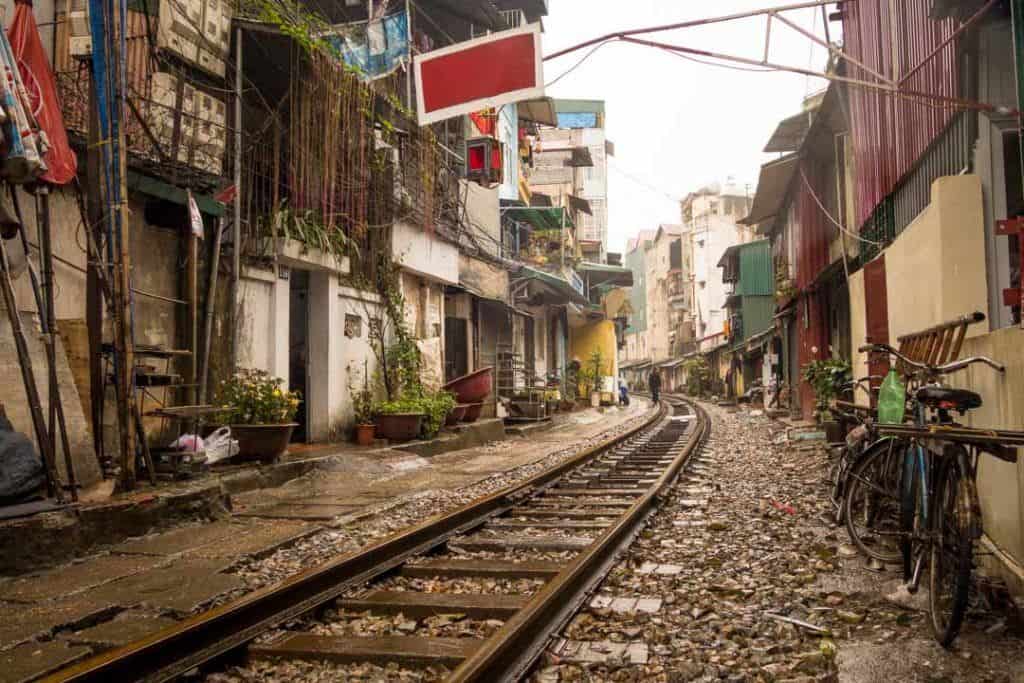
We know you’ll absolutely love travelling in Vietnam. But technology has made it easier, more affordable and safer to travel than ever.
Here are a few apps we think you should definitely acquaint yourself with prior to your travels:
Grab – Use this app to catch a ride from any metro area in Vietnam.
XE Currency – Transfer, monitor and calculate currency as the need arises. This app may not be totally necessary as you are typically tied into rates the banks charge for services. But it is handy to have around.
Express VPN – This will protect your sensitive information wherever you travel – not just in [Country]. Be sure to have this to keep your online information secure as you travel.
iTranslate – Even if you don’t know more than a handful of Vietnamese words, iTranslate will help you communicate as you travel in Vietnam.
WiFi Finder – With this app, you no longer have to guess whether the next place on your itinerary has WiFi or scramble across town looking for hot spots.
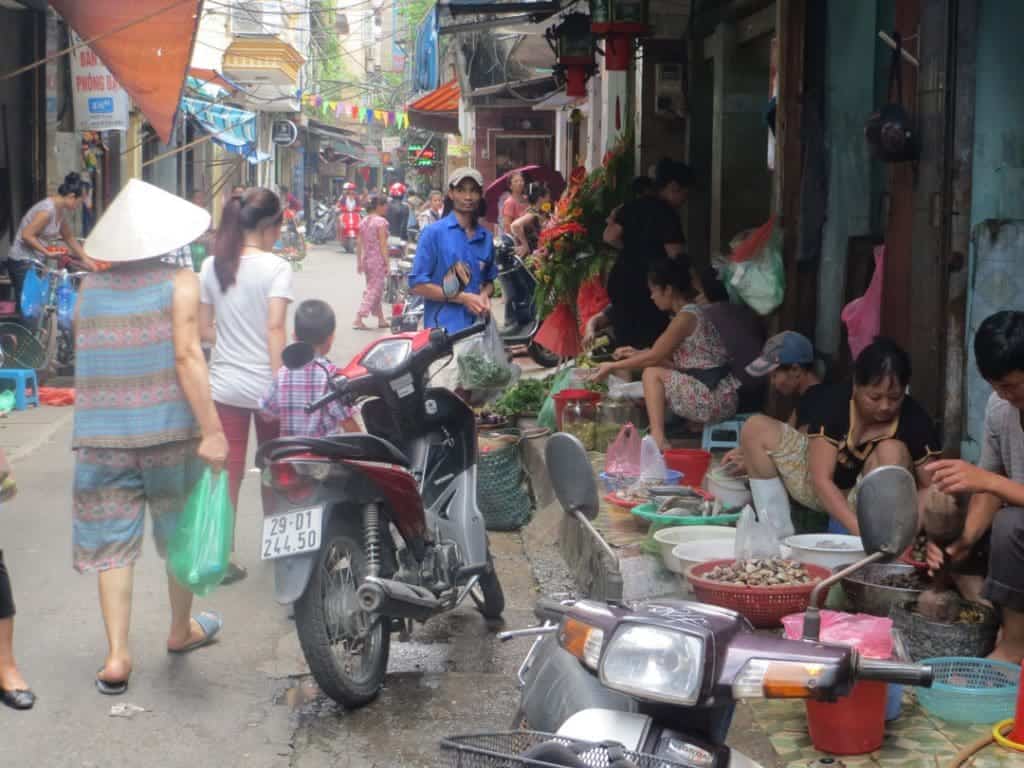
When you travel to a foreign country one of the new and most exciting things you will experience is the food. There are so many amazing food choices in Vietnam, and Vietnamese food is delicious.
Here are a few of our favourites.
Goi Cuon: This is a rice paper packed with greens, coriander and various combinations of minced or shredded pork, shrimp or crab. It will be served with a sweet and sour sauce or a delicious homemade peanut sauce.
Sometimes to make the experience even better, you get to hand roll them yourself. This was our favourite dish.
Banh Mi: With this one, it will be different in every corner of Vietnam. This is a baguette sandwich that is filled with meat, greens, pata, pickled vegetables, soy sauce, cilantro and sometimes an omelet.
The meat filling will be roasted pork belly, grilled pork loin, barbecue pork, boiled chicken, or a fried egg.
Pho (pronounced ‘fur’): This flat rice noodle soup is either light beef or chicken broth flavoured with coriander and ginger with spring onions and bits of meat (chicken, pork or beef).
It is a dish you can have any time of the day and is delicious, but it can be hit and miss in some places. If you have an average one, please do try it again. We ate pho a lot for breakfast and never got sick of it.
Bun Cha: This is a Hanoi specialty and it is deliciously addictive. Bun Cha is served with grilled fatty pork over a plate of white rice noodles. It will be served with a sauce.
It will all be served separately and you combined everything together. You can ask for some little fried spring rolls on top too. It is so delicious!
Coa Lau: Hoi An is the best (and only authentic) place to try this one. as the noodles are made using water from a special well in town.
It is chewy rice flour noodles with Chinese barbecue pork, bean sprouts, croutons and fresh herbs in a delicious pork-based gravy.
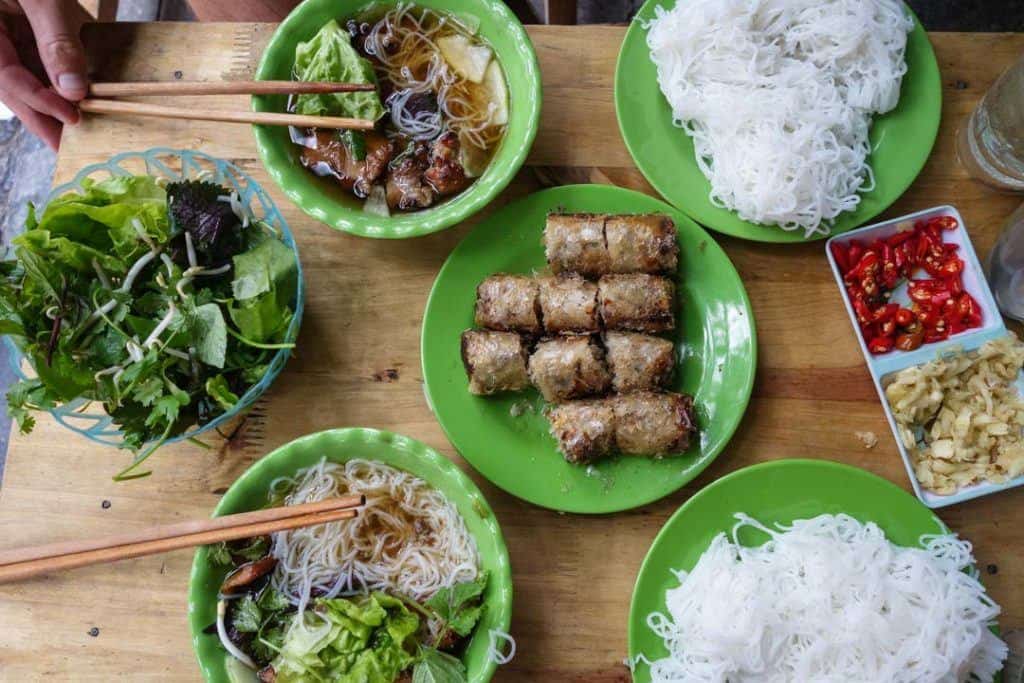
There are accommodation options for all budgets in Vietnam. You can stay in a shared dorm for $5 USD per night, or a luxury hotel for over $300 USD.
The accommodation standards can vary in each destination.
For example, we got a really nice hotel in the middle of nowhere when we were on our bike for $12 a night. But we would not find a place like this in Hanoi, Hoi An, HCMC or Hue for less than $25.
NOTE – In Vietnam, the accommodation will keep your passport for the duration of your stay. This is to do with the government. Officials will randomly come around and check hotels and hostels.
If they do not have the ID or passport of every person staying there, the accommodation will be fined. The accommodation will keep your passport in a safe. If you are unsure just ask, “do you lock my passport up?”
Vietnam is wildly popular among backpackers. Because the costs are generally incredibly low, budget travellers flock to the country.
This means that there are lots of great hostel options when looking for accommodations in Vietnam.
Whether you are busy spending all your time exploring and are just looking for a cheap place to crash for the night or want to make friends along the way, you will find most of what you are looking for in a variety of hostels throughout Vietnam.
Because costs are generally lower in Vietnam than in most parts of the world your quality of life can go up quite a bit when you travel to Vietnam.
One way you can upgrade your travel experience is by booking rooms in hotels instead of beds in hostels. For a few dollars more you’ll get vastly more space and privacy.
In some towns and villages, hotels are your only option.
But generally, these are very reasonably priced. You can expect to spend USD$20-30 for a decent hotel room in most cities, towns and villages across Vietnam.
Another good option in recent years is AirBnB, and there are more and more amazing places popping up to stay in Vietnam for very affordable prices every day.
As is typical in many destinations where Airbnb accommodations are available, you’ll likely find great value and a little more personal space with an Airbnb stay.
If you’re looking for an awesome place to stay, we personally love using Airbnb. If you’ve never used the platform before, sign up using this link to get USD$35 off your first booking.
We travelled from the south to the north and stayed in many different places. Here are a few accommodation options we highly recommend.
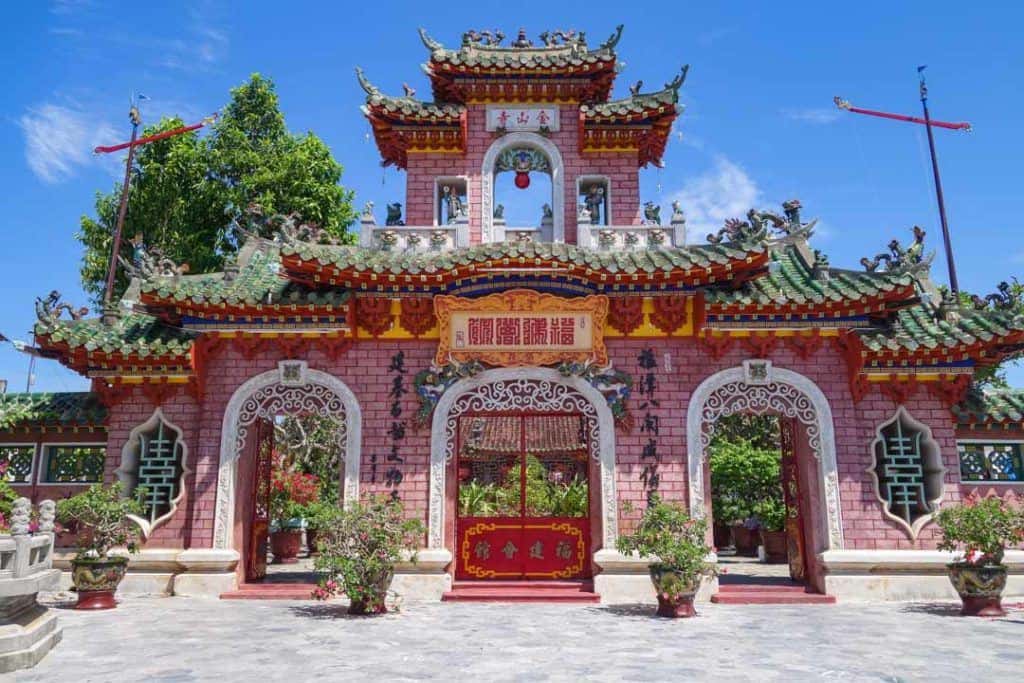
The Vietnamese people are friendly, welcoming and hospitable towards travellers. It is a great destination to travel to in Southeast Asia.
The people are very respectful and would like the same back from you. Here are a few things that you should know before going to Vietnam.
While we have many basic travel tips we suggest you use when travelling to Vietnam, there are also plenty of Vietnam-specific tips that will make your visit the best it can be.
Here are a few we recommend you consider as you plan your trip to visit Vietnam:
Please show respect to their religious beliefs and their cultures. You are travelling to someone else’s country. They have different religious beliefs and cultures in your home. Please respect them.
Watch your belongings. Vietnam is a safe country but unfortunately, there still is petty theft. Whether you are at a restaurant or on a bus always watch your belongings.
Beware of the counterfeit tour agencies. Unfortunately, there are plenty of these around, especially in the main tourist areas. Book through the main owner or operator or any of these tours that we recommend.
Do not drink the tap water. The locals don’t even drink the water. There is bottled water available everywhere. Popular tourist restaurants will usually have on their menu that they wash their salad and veggies in sterilised water and make tea, coffee and soup from that too.
Carry toilet paper everywhere. There are toilets available in restaurants or in public but there may not be toilet paper. Most of the time you have to pay for the public toilet and they may give you some toilet paper, but don’t count on it. Always have your stash.
Toilet paper goes in the bin. DO NOT put the toilet paper in the toilet. Please put it into the bin provided. Vietnam’s sewerage systems are not built for much more than human waste so toilet paper and other items will just clog up your toilet.
Embrace the “bum gun“. Next to every toilet in Vietnam, there is a water hose. This is not to wash down the floor. This is to clean yourself up after you do your business. Don’t be disgusted by this. Embrace it.
Vietnam is bigger than you think. This country is huge and many people underestimate it. Vietnam is about 1,650 kilometres long from north to south. The distance on buses and trains is long so be prepared.
Take note of the Vietnamese money. It will be a new currency for you so do take a look at it before you go out spending. There are more zeros in it than you might be used to (1USD = 23,000 Dong)
Always take photos when you rent a scooter. Renting a scooter in Vietnam is something everyone does. It is a great way to get around and see all the attractions. But where you rent it from can get you into trouble. Whenever you rent a scooter take photos of the bike or else might end up with a crazy expensive bill.
Always wear a helmet. Always. Please wear a helmet. The roads are crazier here than they are in your country. The rules are different and road conditions are not the best. A quality helmet could save your life in an accident.
Make sure you have travel insurance. We tell people who are going travelling, “if you can’t afford travel insurance, you can’t afford to travel.” You do not know what is going to happen while you are away and knowing you are covered will put your mind at ease.
Be confident when crossing the road. The roads in Vietnam are crazy. Crossing the road can be daunting but you need to be confident. Do not walk backward or hesitate. Walk slowly and watch the traffic coming towards you. They will all move around you.
Take your shoes off before entering a temple or a person’s home. It is a custom that stems back to ancient times and a big part comes back to cleanliness. The ground is used for chatting, dining and even sleeping.
Cover your shoulders and knees when entering a temple. This is common in most religious sites. There are always signs suggesting visitors dress ‘appropriately.’ Shoulders and knees should be covered. If it is a hot day and a t-shirt is too sticky, carry a scarf for when you visit to cover your shoulders.
Keep a low profile. Do not be loud, raise your voice in aggression or show off. Do not show dramatic affection publicly like kissing. Save it for the hotel room
Ask for permission before taking a photo of someone. This is polite and ensures you are not intruding on them. The people are not there for your entertainment. If they say no, smile and thank them anyway.
Do not take photos of anything to do with the government or military. This is a big NO in any country and can end up with you in jail.
Do not touch someone on the head. The head is the most important part of the body. Touching someone’s head who you don’t know is like saying you are more important than they are.
Place your chopsticks across the top of the bowl when finished. Don’t have your chopsticks hanging out of the bowl, and don’t point them at anyone when they are resting on the plate.
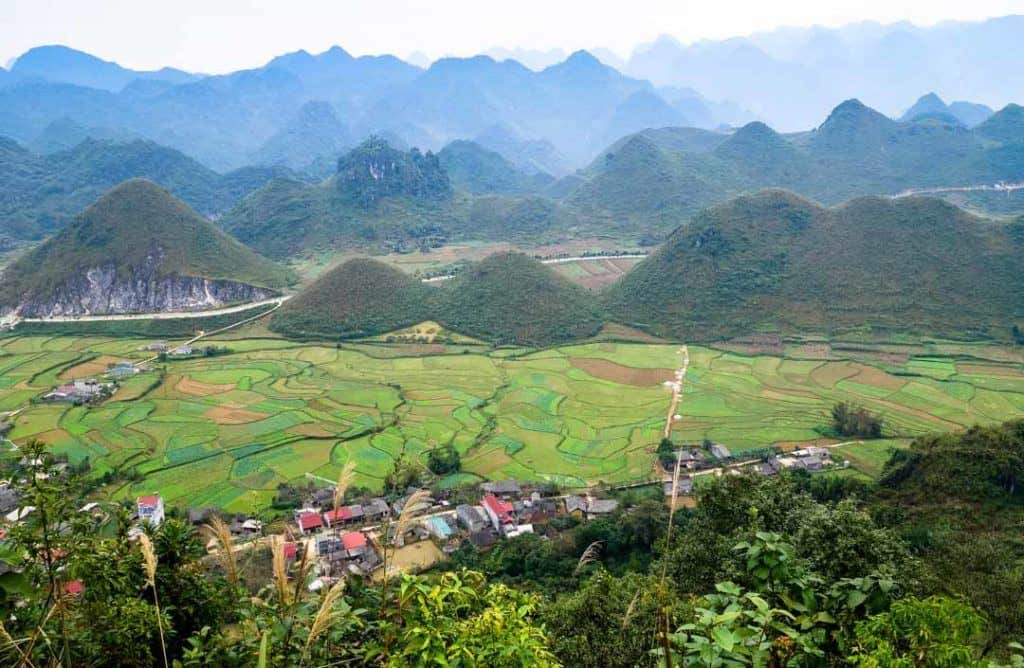
We always travel with a core packing list wherever we go. And when it comes to Vietnam, many factors will affect what else you need to bring along with you.
Check out our travel essentials and be sure to add any of the other additional items listed below.
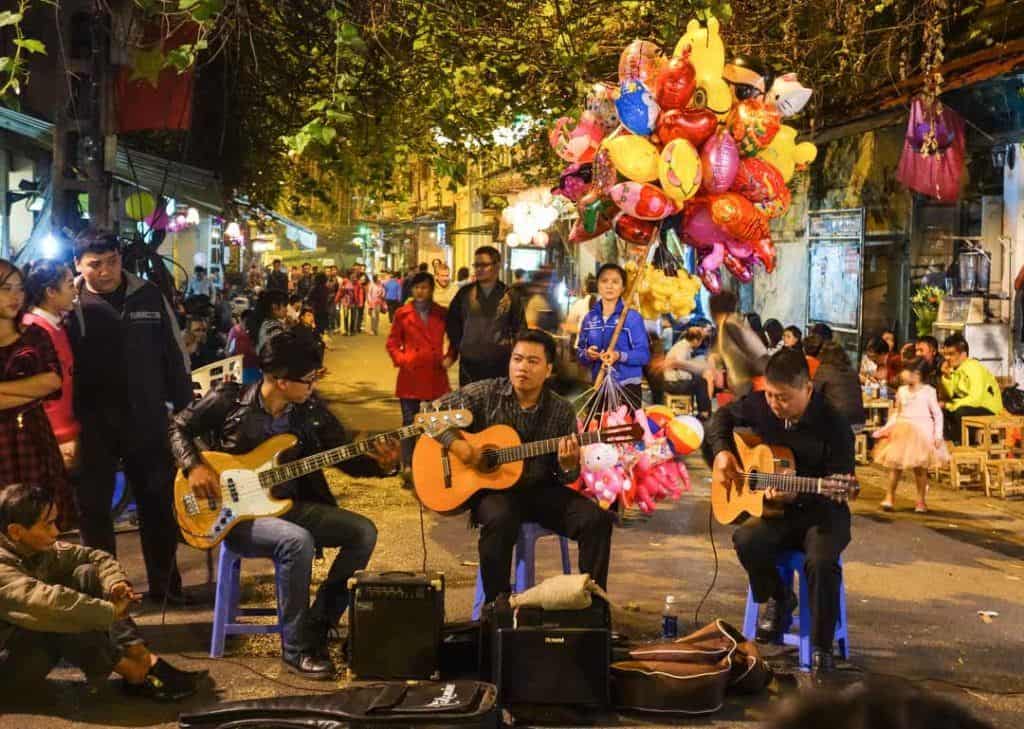
Staying connected with friends and family (and work) when travelling in Vietnam is important. But if you don’t know how to connect you can find yourself greatly inconvenienced or spending too much money.
We feel like your money will go a lot further if you consider a few options.
Picking up a SIM card has become the quickest and typically most affordable way to stay connected in Vietnam or any country for that matter.
If you have an unlocked phone you can use a 4G SIM card to connect to the cellular networks in Vietnam. From there you can cast a hot spot if you need to crank out some work on your computer or want to connect a tablet.
This 3G/4G SIM card is a great and affordable option for a SIM card if you are flying into Vietnam.
Alternatively to a SIM card, particularly if you don’t have an unlocked phone, you can rent a portable WiFi device during your travel to Vietnam.
This device will be delivered to you when you arrive in Vietnam and will provide 4G service for less than USD$5 per day.
You’ll be able to connect anywhere you can find service across the country, which will be most of the places you are likely to travel in Vietnam.
Free is always best, if it is convenient. And there are plenty of places throughout Vietnam that will provide free WiFi in public spaces or at restaurants, cafes and hostels and hotels.
We recommend using the WiFi Finder app, which will help you locate WiFi anywhere you travel in Vietnam.
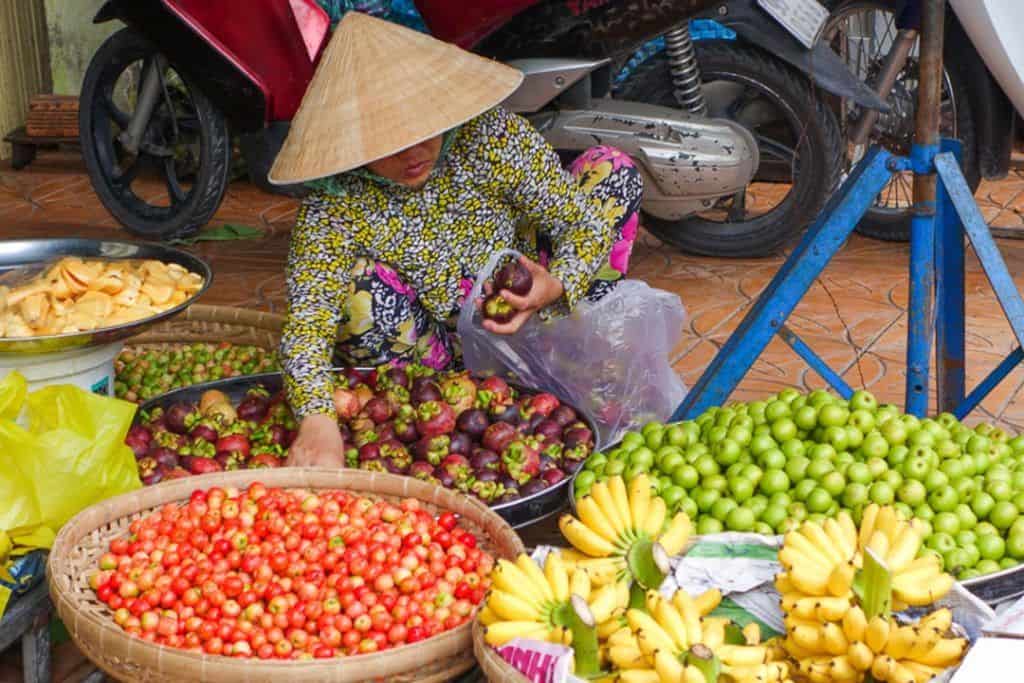
We absolutely love Vietnam. And we love the idea that it will remain a beautiful and friendly place for travellers for years to come.
Here are a few tips specific to travel to Vietnam that will promote sustainable tourism in the country:
Use your own energy to get around. Walk or cycle through town as much as possible. Taking a cyclo-taxi is a close alternative if you don’t have the energy to propel yourself through the city. But this reduces the impact of taxis, busses and other forms of automotive transportation.
Mind your plastic. Plastic is everywhere in Vietnam. But using your own reusable bag for groceries and other shopping, carrying a reusable water bottle and having your own straw are just 3 of the many simple ways you can reduce the amount of plastic you use.
Shop local. Visiting the markets will be one of your top experiences when travelling to Vietnam. Support local vendors as often as possible, including in taking tours when available.
Be mindful of wildlife. Wildlife in the wild is great. But be mindful not to provoke, feed or otherwise molest wildlife. And never purchase any item made of or involving rare or endangered species.
Attempt to communicate in Vietnamese. You’re probably not going to be fluent as soon as you arrive in the country. But knowing a few phrases and doing your best to communicate with locals will show respect and earn trust and make your experience richer.
| READ MORE: At NOMADasaurus, we believe and promote responsible, sustainable travel wherever you go in the world. If you need more ideas, be sure to check out our comprehensive sustainable tourism guide. |
You don’t have to be fluent in Vietnamese to have a great time when you travel to Vietnam. But it does help to know a few key phrases.
This will not only assist you in your travels but it will also show respect to the local Vietnamese people that you are doing your best to assimilate into their culture.
| Please / Làm ơn (Lahm uhn ) | Excuse me / Xin Lỗi (sin loy) | Yes / Dạ (yah) |
| Thank you / Cảm Ơn (gam un) | I’m sorry / xin lỗi (Seen loy) | No / Không (comb) |
| Hello / Xin Chào (sin chow) | Too expensive / Mac Qua (Mac wa) | My name is __ / Ten toi la ___ (Ten toy la ___) |
| Goodbye/ Chào (jaow) | Where is _____ ? / ___ ở đâu? (__ uh doh?) | How much / Bao nhiêu? (bow nyew) |
| Good morning / Chào buổi sáng (jaow bui sang) | I would like __ / cho toi cai nay ( Chor toi kah nai) | Cheers! / Chúc sức khoẻ! (keo say kwa) |
| Good afternoon / Chào buổi tối (jaow bui to-oy) | Beer / Bia (bee ya) | Where is the toilet? / Nhà vệ sinh ở đâu? (nah vey sin uh dow) |
| Good evening / Chúc Ngủ Ngon (Choop nguu ngon) | Can you speak English? / Ban noi tieng anh duoc khong? (Banh noi thien an durkh khom) | I don’t understand / Tôi không hiểu. (toy comb hey-oo) |
| How do you say __ / Bạn nói __ thế nào trong tiếng Việt? (Ban noi __ te now tong te Viet) | I’d like to eat __ / Toi muon an (thoy moowan un) | I’d like to drink __ / Toi muon uong (thoy moowan oowanh) |
Maybe you already know everything about Vietnam. Chances are you don’t!
But even if you are well-read, here are a few suggestions that might be worth your time while you’re on the plane to Vietnam.
The Quiet American (Graham Greene) – Originally published in 1956 and adapted for film twice, this story by Greene became an instant classic. Greene fictionalizes life in 1950s Vietnam as told by a British correspondent trying to understand the roots of the rising conflict set to occur.
At Home In The World (Thich Nhat Hanh) – World renown Vietnamese monk, Hanh reflects on lessons and stories in life from the Buddhist perspective.
Vietnam: Rising Dragon (Bill Hayton) – A piece of nonfiction that looks back on the Vietnam of old and attempts to projects its place in the future of Southeast Asia.
The Sympathizer (Viet Thanh Nguyen) – The Pulitzer Prize-winning book, allegedly influenced by The Quiet American, is told through the eyes of a double-agent during the Vietnam War who struggles to understand the minds and hearts of men engaged in war.
DISCLAIMER: Some of the links in this article are affiliate links, which means if you book accommodation, tours or buy a product, we will receive a small commission at no extra cost to you. These commissions help us keep creating more free travel content to help people plan their holidays and adventures. We only recommend the best accommodations, tours and products that ourselves or our fantastic editorial team have personally experienced, and regularly review these. Thanks for your support, kind friend!